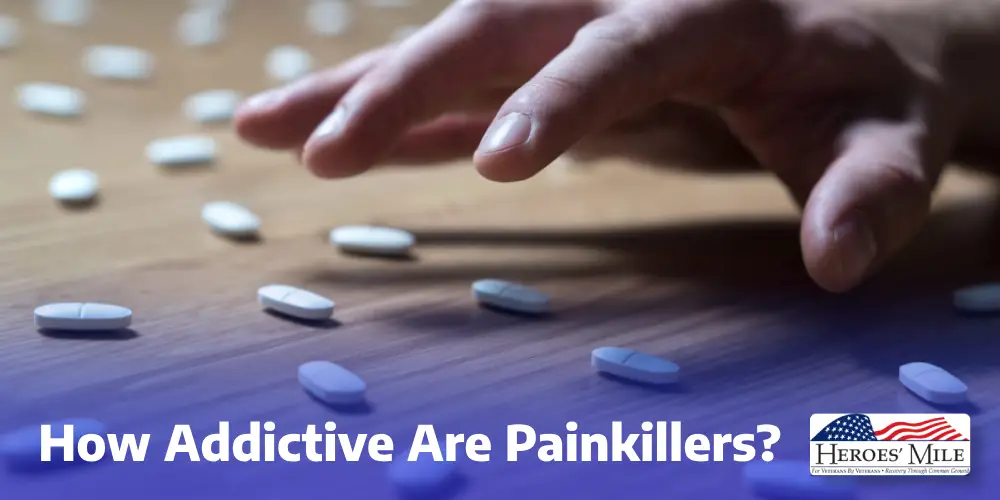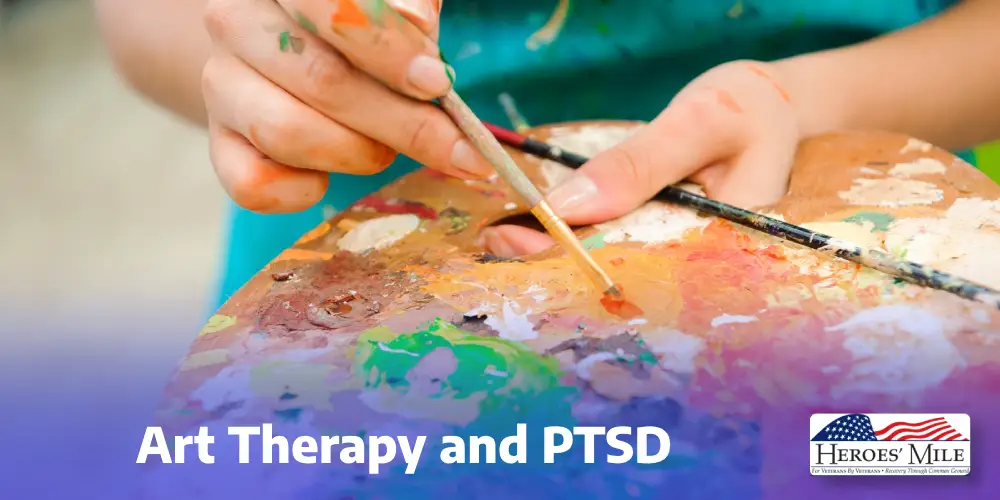If a traumatic experience has caused you to seek refuge at a rehab center for Veterans in Florida, you’re not alone. However, since each person is unique, your response to these events may not be exactly the same as everybody else’s.
What You Should Know About PTSD

What You Should Know About PTSD
What Is PTSD?
Post-traumatic stress disorder, also known as PTSD, is a psychiatric disorder that affects around 10% of the American adult population. Most people associate this mental health diagnosis with military service personnel returning home from war. For this reason, PTSD was also referred to as “shell shock” after World War I and “combat fatigue” during the years of World War II.
However, PTSD can happen to anyone who has been exposed to serious injury, sexual violation, the threat of death, or actual death. Research shows that women are twice as likely as men to develop PTSD. Moreover, approximately 7.7 million Americans have suffered or are suffering from this disorder, and another 8% of the U.S. population will develop the condition over time.
Although many individuals experience the symptoms of PTSD right after a traumatic event, others don’t experience the symptoms until years later. What makes PTSD different from acute stress disorder is that it usually produces long-term symptoms that can significantly affect a person’s daily life. Unfortunately, not everyone who suffers from this multidimensional disorder is aware of its symptoms.
What Are the Different Subcategories of PTSD?

What Are the Different Subcategories of PTSD?
It’s important to note that PTSD is a treatable condition. Mental health professionals use different treatments and therapies to manage the symptoms based on the type of PTSD a person is dealing with.
1. Normal Stress Response
In most cases, PTSD begins with a normal stress response that some people may not even be aware of. However, this doesn’t necessarily imply that all normal stress responses develop into a full-blown disorder. Besides affecting the nervous, immune, and endocrine systems, normal stress responses activate the body’s flight-or-freeze response.
Events such as accidents, illnesses, injuries, surgeries, abandonment, and other sources of high amounts of tension and stress can lead to a normal stress response. The body returns to pre-arousal levels only after the threat or perceived threat is over. Normal stress responses usually don’t cause disruption to day-to-day life or produce long-term effects.
Since talking to someone eases stress and anxiety, effective management of normal stress responses typically involves group therapy and individual psychotherapy (talk therapy) sessions. However, the support of loved ones or a larger circle of supporters plays a critical role in the affected person’s recovery. If all goes well, normal stress responses can be resolved within a couple of weeks.
2. Acute Stress Disorder
A person exposed to a life-threatening event such as a loss of a job, loss of a loved one, risk of death, or natural disaster may experience acute stress disorder. Studies show that the rate of developing this disorder varies for each type of trauma. For instance, about 13-21% of individuals are likely to develop acute stress disorder after a car accident, while approximately 20-50% develop the condition following an assault, rape, or mass shooting.
Symptoms of acute stress disorder may start between three days and one month following the traumatic event. If left untreated, acute stress disorder may progress to PTSD.
Furthermore, acute stress disorder is managed through medication, psychotherapy, cognitive-behavioral therapy (CBT), group support, and more intensive treatments designed by a psychiatrist. According to older studies, CBT effectively reduces symptoms while decreasing the chances of the symptoms developing into PTSD.
3. Uncomplicated PTSD
Uncomplicated PTSD is associated with one significant traumatic event rather than multiple ones. Symptoms of uncomplicated PTSD include a strong desire to avoid the people or places related to the trauma, flashbacks to the event, nightmares, irritability, changes in relationships, and mood changes. While its symptoms may be similar to those of the other types of PTSD, they don’t coexist with depression and other mental health conditions.
Besides being the most commonly diagnosed type of PTSD, it’s also the easiest to treat. Uncomplicated PTSD can be treated via medication, therapy, or a combination of both.
4. Complex PTSD
Complex PTSD results from multiple traumatic events that often involve domestic violence or abuse. Additionally, repeated exposure to community violence, war, or sudden loss may also trigger complex PTSD. Since chronic trauma linked to complex PTSD symptoms can occur in childhood or adulthood, they often cause problems with behavior and relationships.
Those with complex PTSD are often diagnosed with antisocial personality disorder, borderline personality disorder, and dissociative disorders. These individuals usually exhibit chronic pain, fatigue, aggression, impulsivity, sexual impulsivity, or substance abuse. On top of these behavioral issues, they also show signs of depression, intense range, panic, and other emotional problems.
Although the symptoms of complex PTSD are similar to those of uncomplicated PTSD, treatment of complex PTSD is more intense and takes longer than uncomplicated PTSD. Moreover, the management plan involves a highly structured design delivered by a team of trauma specialists. The recovery period usually happens at a slower rate.
5. Dissociative PTSD
In 2013, this type of PTSD was added to the latest version of the Diagnostic and Statistical Manual of Mental Disorders (DSM-5). In addition to its key features such as depersonalization and emotional detachment, dissociative PTSD also exhibits more severe PTSD symptoms, including:
- Dissociative flashbacks and amnesia
- Co-occurrence with other types of mental health conditions at higher levels
- A more significant history of early life trauma
Research on treatment for dissociative PTSD is still ongoing. However, effective management generally involves cognitive processing therapy (CPT), prolonged exposure (PE), narrative exposure therapy (NET), and eye movement desensitization and reprocessing (EMDR).
6. Co-morbid PTSD
People with co-morbid PTSD are also diagnosed with one or more co-occurring mental health disorders. These conditions include panic disorder, anxiety disorder, major depressive disorder, or substance abuse disorder. Treatment for this type of PTSD typically involves managing its symptoms along with the symptoms of its co-occurring mental health conditions.
Are You Looking for a Rehab Center for Veterans in Florida?

Are You Looking for a Rehab Center for Veterans in Florida?
At Heroes’ Mile, we’re here to guide individuals from self-defeating thinking and behaviors to a higher level of social, emotional, and moral awareness. We serve Veterans suffering from addiction and the effects of Post-Traumatic Stress (PTS) and Military Sexual Trauma (MTS) while serving in the military, which allows them to forge a path back to a normal life. Contact us today to make an appointment.
Video
Return from Chaos: Treating PTSD – Ted Talk
Peter Tuerk, the director of a VA PTSD program, introduces how we process experiences and trauma. Using examples from his research, he describes how it’s possible to process memories and their associated meanings to overcome a traumatic incident. When active avoidance impedes natural recovery the most effective healing is facilitated through treatment designed to limit avoidance and to assist with the processing of relevant information.
News Audio
The Many Forms, Faces And Causes Of PTSD – NPR
About 7 or 8 percent of people experience PTSD at some point in their lives, according to the Department of Veterans Affairs. The rate is higher for women than for men: about 10 percent compared with 4 percent. Experiencing sexual assault or child sexual abuse, or living through accidents, disaster or witnessing death can all be contributing factors, in addition to time in combat with the military.
FAQ
- What are the main types of PTSD?
PTSD is typically categorized into four types: normal stress response, acute stress disorder, uncomplicated PTSD, and complex PTSD. Each type varies based on severity, symptoms, and duration. - How is complex PTSD different from regular PTSD?
Complex PTSD (C-PTSD) develops from prolonged or repeated trauma, such as childhood abuse or long-term domestic violence, whereas standard PTSD often results from a single traumatic event. - Can PTSD symptoms change over time?
Yes, PTSD symptoms can evolve. Some individuals experience symptoms that lessen with treatment, while others may develop delayed-onset PTSD, where symptoms appear months or years after the trauma. - What are the treatment options for different types of PTSD?
Treatment varies depending on the type of PTSD but often includes therapy (CBT, EMDR), medication, lifestyle changes, and support groups. - How can someone tell if they have PTSD or another anxiety disorder?
PTSD includes specific symptoms such as flashbacks, nightmares, and avoidance of trauma-related triggers, whereas other anxiety disorders may not involve a direct traumatic event. A mental health professional can provide an accurate diagnosis.



